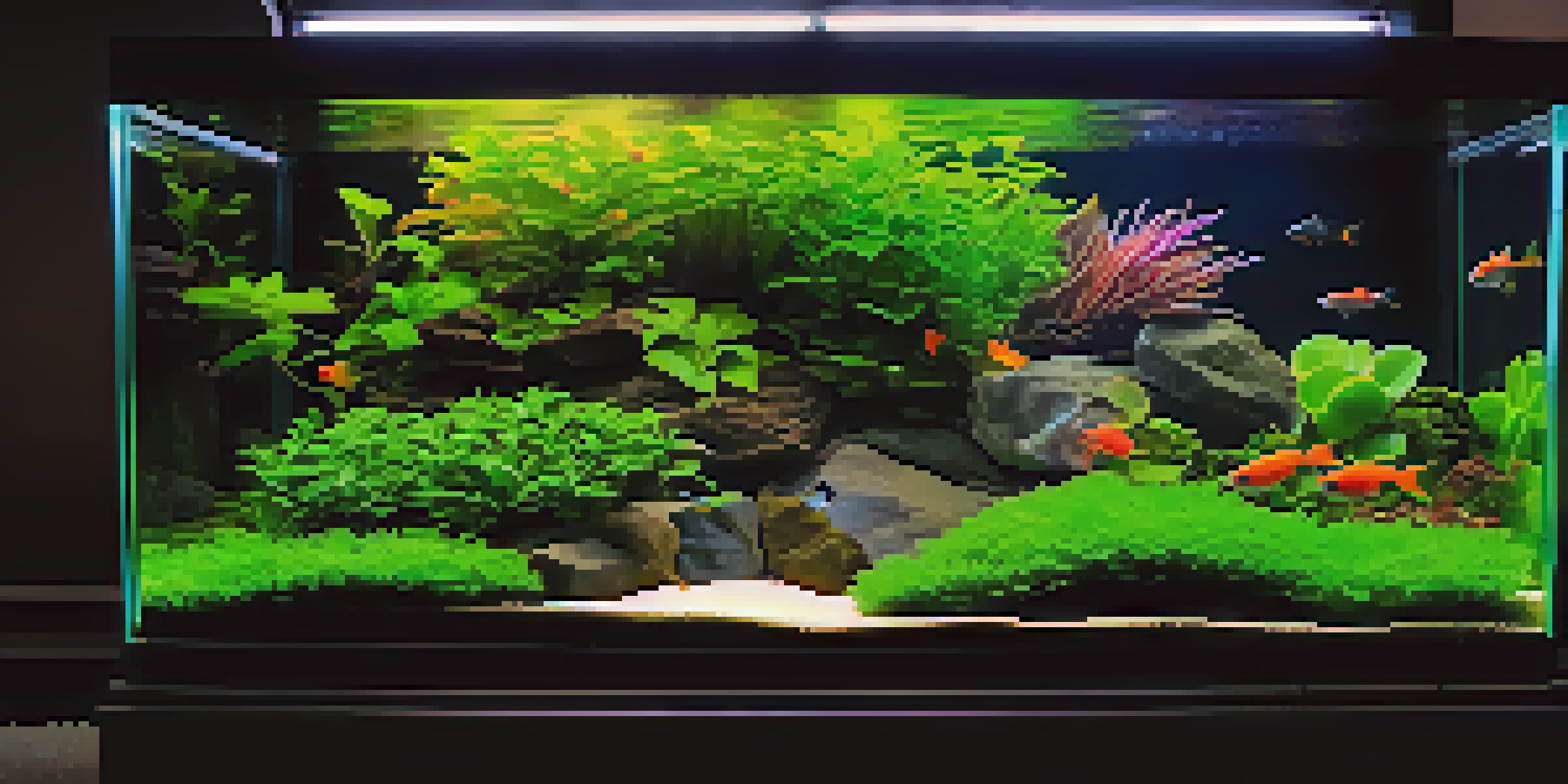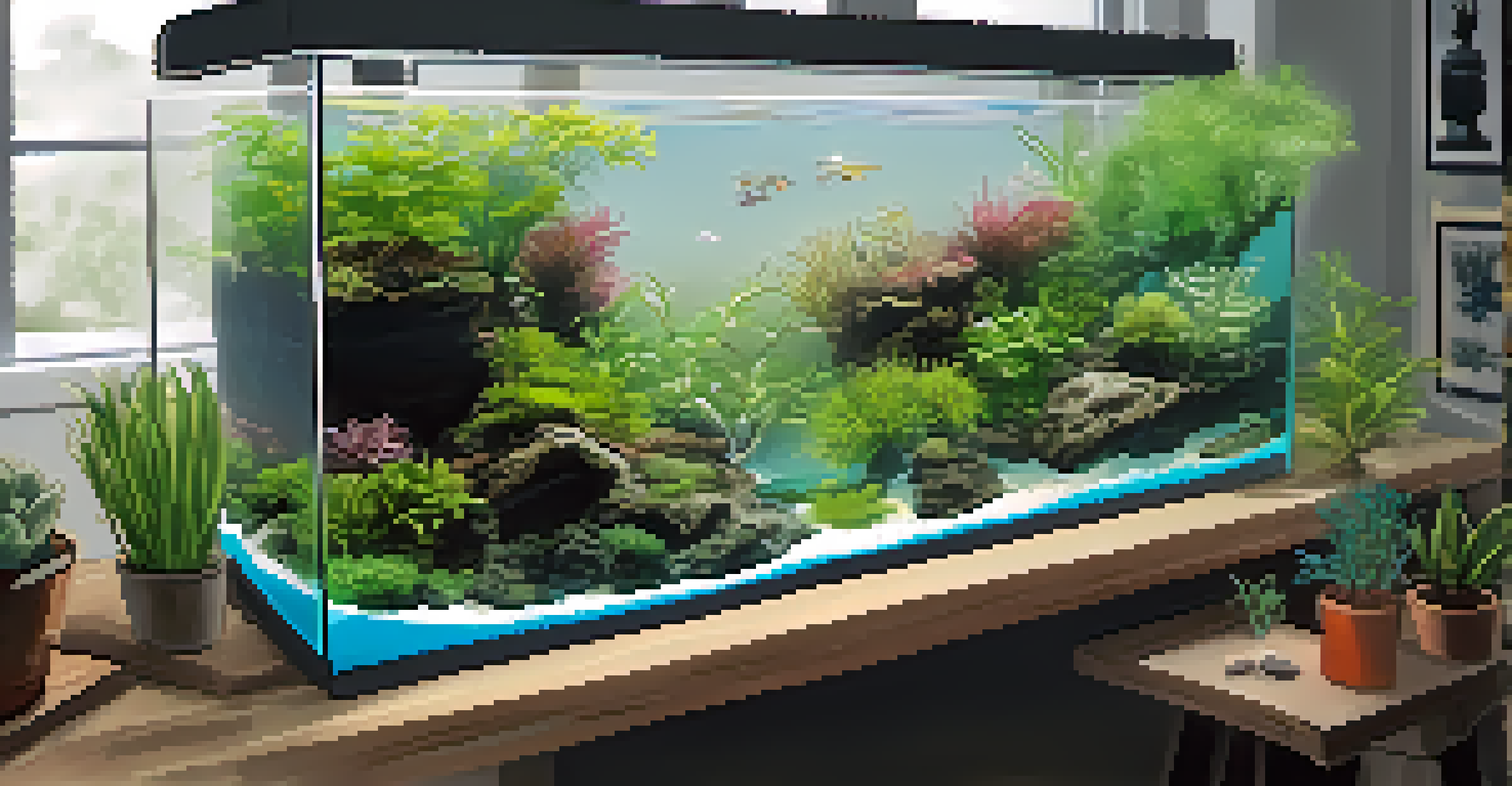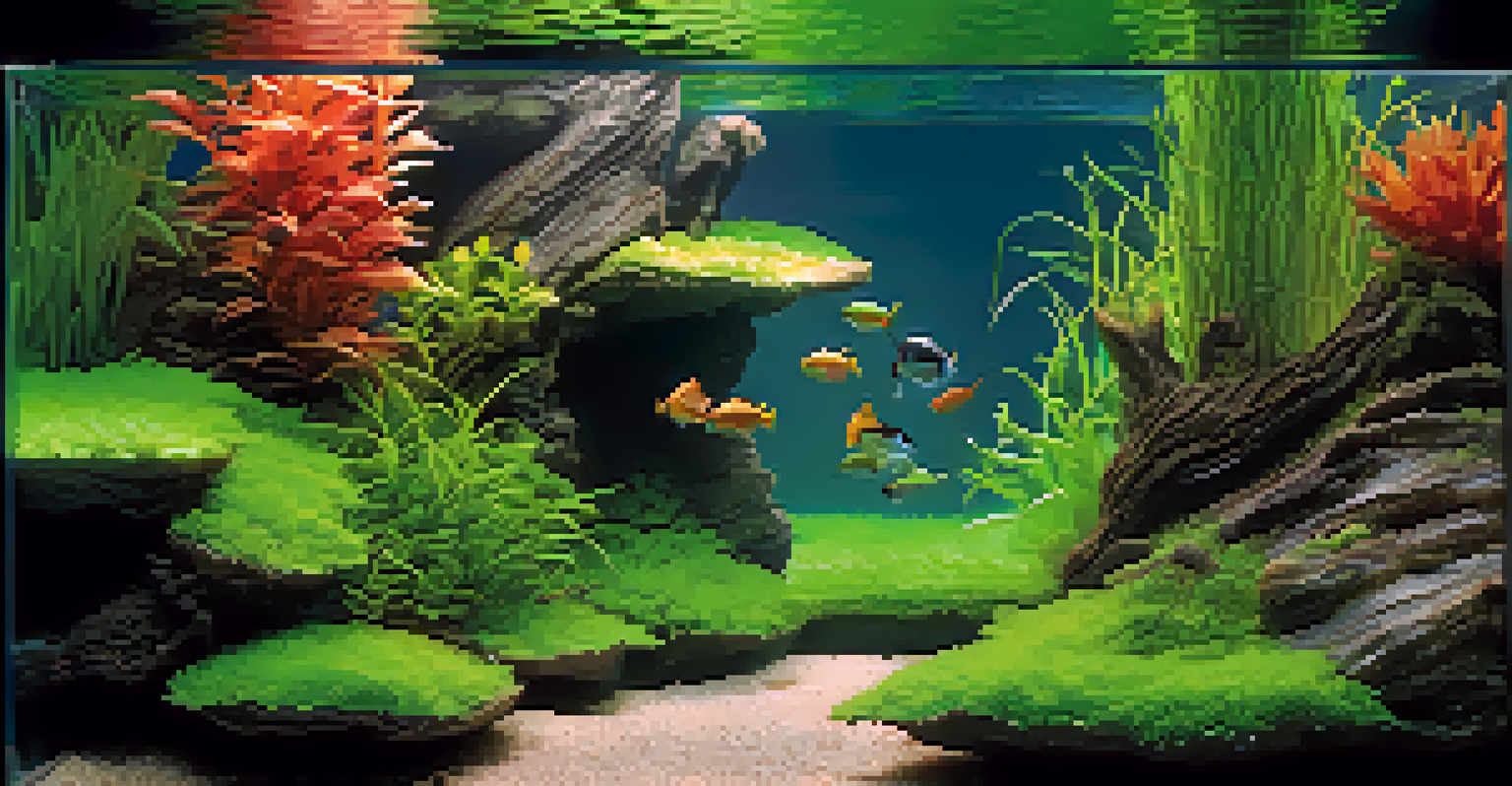Common Aquascaping Mistakes and How to Avoid Them

Neglecting Proper Planning Before Starting Your Aquascape
One of the biggest mistakes aquascapers make is diving in without a clear plan. Planning your aquascape allows you to visualize the layout and choose suitable plants and decorations ahead of time. Think of it like sketching a blueprint for a house; without it, you might end up with a chaotic mess instead of a cohesive design.
Planning is bringing the future into the present so that you can do something about it now.
Creating a layout on paper helps you understand the space and choose the right elements to fill it. Consider factors such as the size of your tank and the types of plants or fish you want to include. This preparation can save you time and money by preventing unnecessary purchases and adjustments later on.
By dedicating time to planning, you set the stage for a successful aquascape that not only looks great but also functions well for the aquatic life you want to keep. So grab a pencil and get those ideas flowing before you start!
Overcrowding Your Aquascape with Too Many Plants
Another common mistake is overcrowding your tank with too many plants. While lush greenery is often the goal, cramming too many species together can lead to competition for nutrients and light. Imagine trying to host a party in a tiny room; it can quickly feel cramped and overwhelming!

When selecting plants, consider their growth patterns and mature sizes. It's essential to give each plant enough space to thrive, which will ultimately lead to a healthier ecosystem in your tank. You might want to choose a few focal point plants and complement them with smaller species to maintain balance.
Plan Your Aquascape Carefully
Taking the time to plan your aquascape helps you visualize the layout and select the right plants and decorations, ensuring a cohesive design.
Remember, less can be more in aquascaping. A well-spaced arrangement not only enhances aesthetics but also simplifies maintenance, making it easier for you to enjoy your aquatic masterpiece without constant fuss.
Ignoring the Importance of Proper Lighting for Your Plants
Lighting is crucial for the success of your aquascape, yet many hobbyists overlook its significance. Plants require specific light levels to grow and flourish, and inadequate lighting can lead to stunted growth or algae problems. Think of it as the sun for your plants; without it, they simply can't thrive.
The key to success is to start before you are ready.
When selecting lighting, consider the type of plants you have and their specific light requirements. This includes factors such as intensity and duration of light exposure. Investing in a quality light fixture can make a big difference in how vibrant and healthy your aquascape looks.
A well-lit tank not only enhances the colors of your plants but also creates a beautiful atmosphere in your home. So, take the time to research and find the right lighting solution that fits your aquascaping vision.
Failing to Maintain Proper Water Parameters in the Tank
Ignoring water parameters is a common pitfall that can devastate your aquascape. Factors like pH, hardness, and temperature can affect plant health and aquatic life. It's essential to routinely test your water to ensure it meets the requirements of both your plants and fish.
Each species has its own preferences, and failing to provide the right environment can lead to stress or even death. Make it a habit to monitor these parameters regularly and adjust them as needed. This might involve regular water changes or adding supplements to maintain balance.
Maintain Appropriate Water Conditions
Regularly testing and adjusting water parameters like pH and temperature is crucial for the health of both plants and aquatic life.
Keeping a close eye on water quality not only supports healthy growth but also prevents unwanted algae blooms and other issues. By prioritizing water conditions, you're creating a sustainable habitat that benefits all tank inhabitants.
Neglecting Regular Maintenance of Your Aquascape
Once your aquascape is set up, it's easy to think the hard work is over, but regular maintenance is key. Neglecting tasks like trimming plants, cleaning equipment, and changing water can lead to an overgrown and unhealthy tank. Picture a garden left untended; it quickly becomes a jungle, right?
Establishing a maintenance routine will help keep your aquascape looking its best. This can include weekly water changes, monthly plant trimming, and cleaning the substrate. Not only does this prevent algae overgrowth, but it also allows you to enjoy the beauty of your aquascape without the stress of major overhauls.
Regular upkeep not only enhances the beauty of your tank but also ensures a stable environment for its inhabitants. Think of it as nurturing a living artwork—your dedication will shine through in the final result!
Choosing Incompatible Species for Your Aquascape
Selecting the right species for your aquascape is vital, yet many beginners make the mistake of mixing incompatible ones. Different plants and fish have unique needs and behaviors; pairing them carelessly can lead to stress or even death. It's like trying to host a dinner party with guests who can’t stand each other!
Before adding any new species, research their compatibility and requirements. Consider factors like size, temperament, and environmental needs. This step ensures that all inhabitants can coexist peacefully and thrive in the same space.
Choose Compatible Species Wisely
Researching the compatibility of plants and fish prevents stress and creates a harmonious environment in your aquascape.
Creating a harmonious environment not only reduces stress for your aquatic life but also enhances the overall beauty of your aquascape. Take the time to curate your selection carefully, and your tank will flourish.
Using Poor Quality Substrates for Plant Growth
The substrate you choose can make or break your aquascaping efforts, yet many overlook its importance. Poor quality substrates may lack essential nutrients, hindering plant growth and overall health. Think of substrate as the foundation of a building; a weak base can lead to structural failures.
Opt for substrates specifically designed for aquascaping, as they often contain vital nutrients that support plant growth. Additionally, consider the thickness of the substrate layer; a deeper layer allows for root development and stability.

Investing in a quality substrate not only benefits your plants but also enhances the aesthetics of your tank. A well-chosen substrate can create a vibrant landscape, making your aquascape a true focal point in any room.
Rushing the Cycle Process and Adding Fish Too Soon
One of the most critical stages of setting up an aquascape is the cycling process, yet many hobbyists rush through it. Adding fish too soon can lead to a toxic environment that endangers their lives. It’s like moving into a new home before the utilities are set up—things can quickly go wrong.
The cycling process allows beneficial bacteria to establish, breaking down harmful ammonia and nitrites. This process typically takes several weeks, but patience is key to ensuring a safe habitat for your fish. Testing water parameters regularly during this time can help you gauge when it's safe to introduce your aquatic friends.
By allowing your tank to cycle properly, you create a stable environment that supports healthy fish and plants. Remember, good things come to those who wait, and your patience will pay off in the long run!